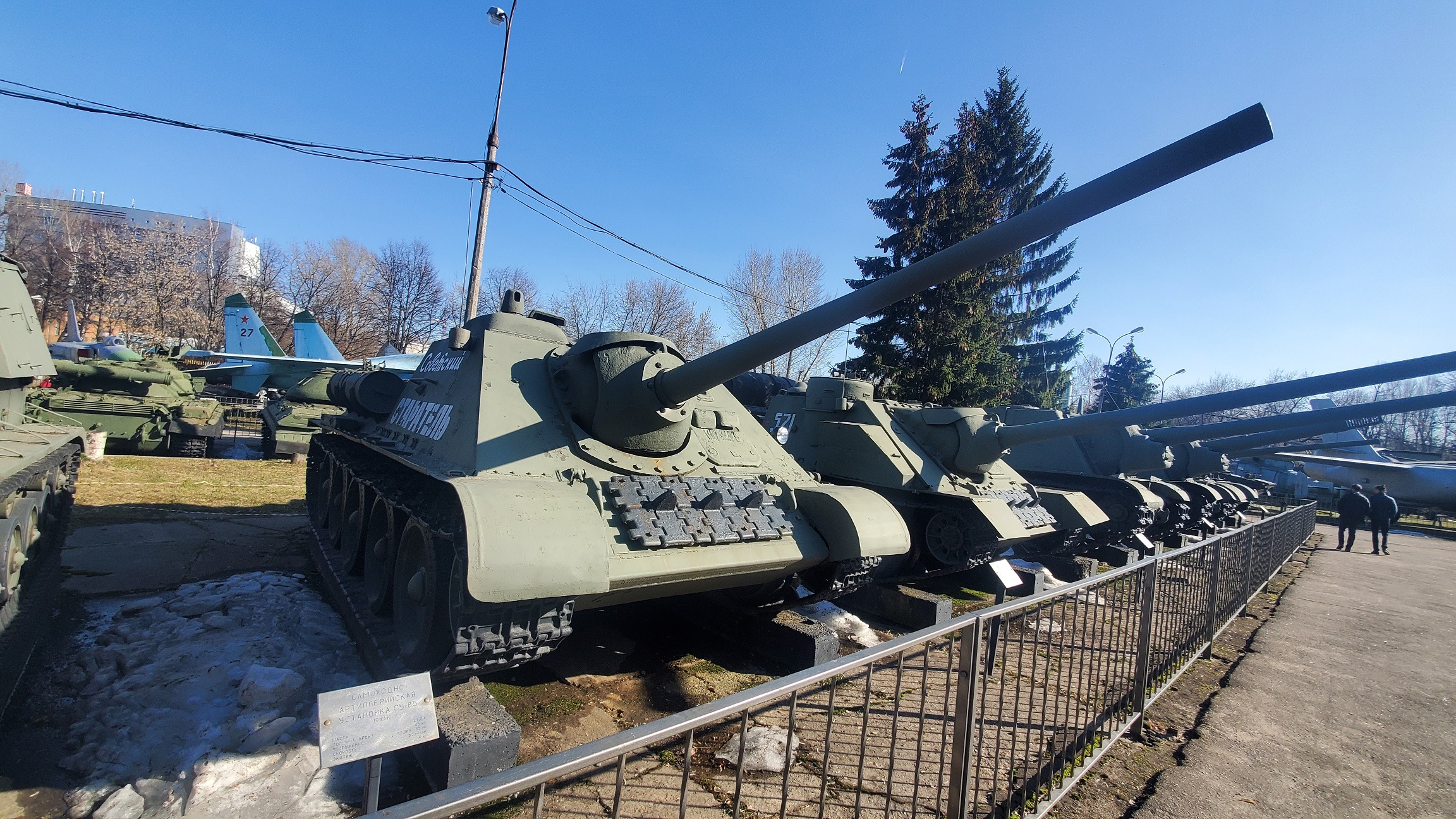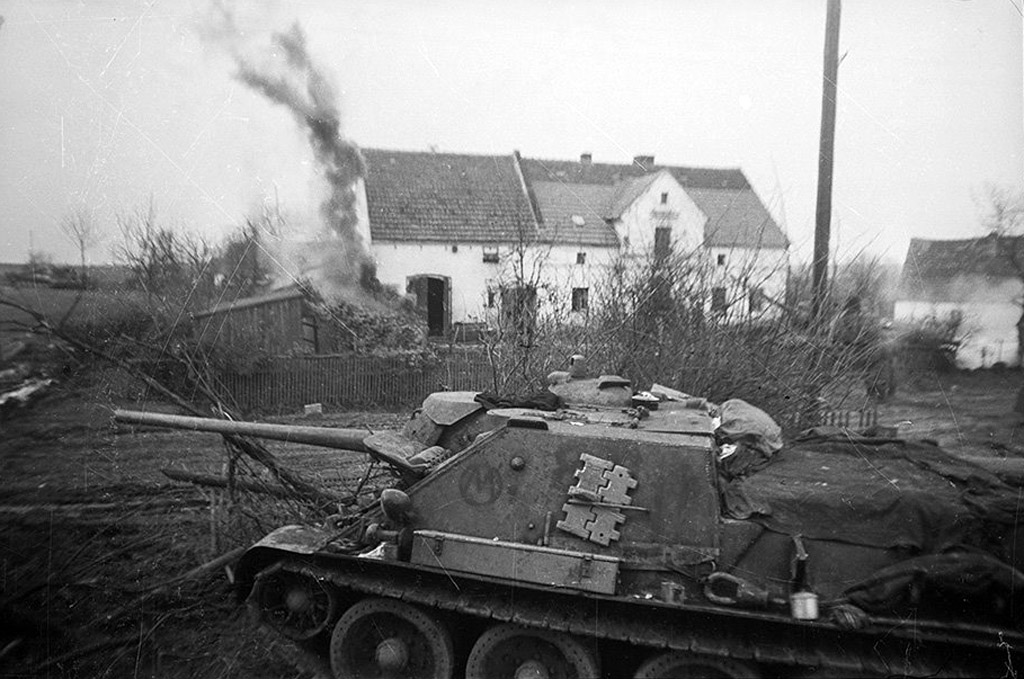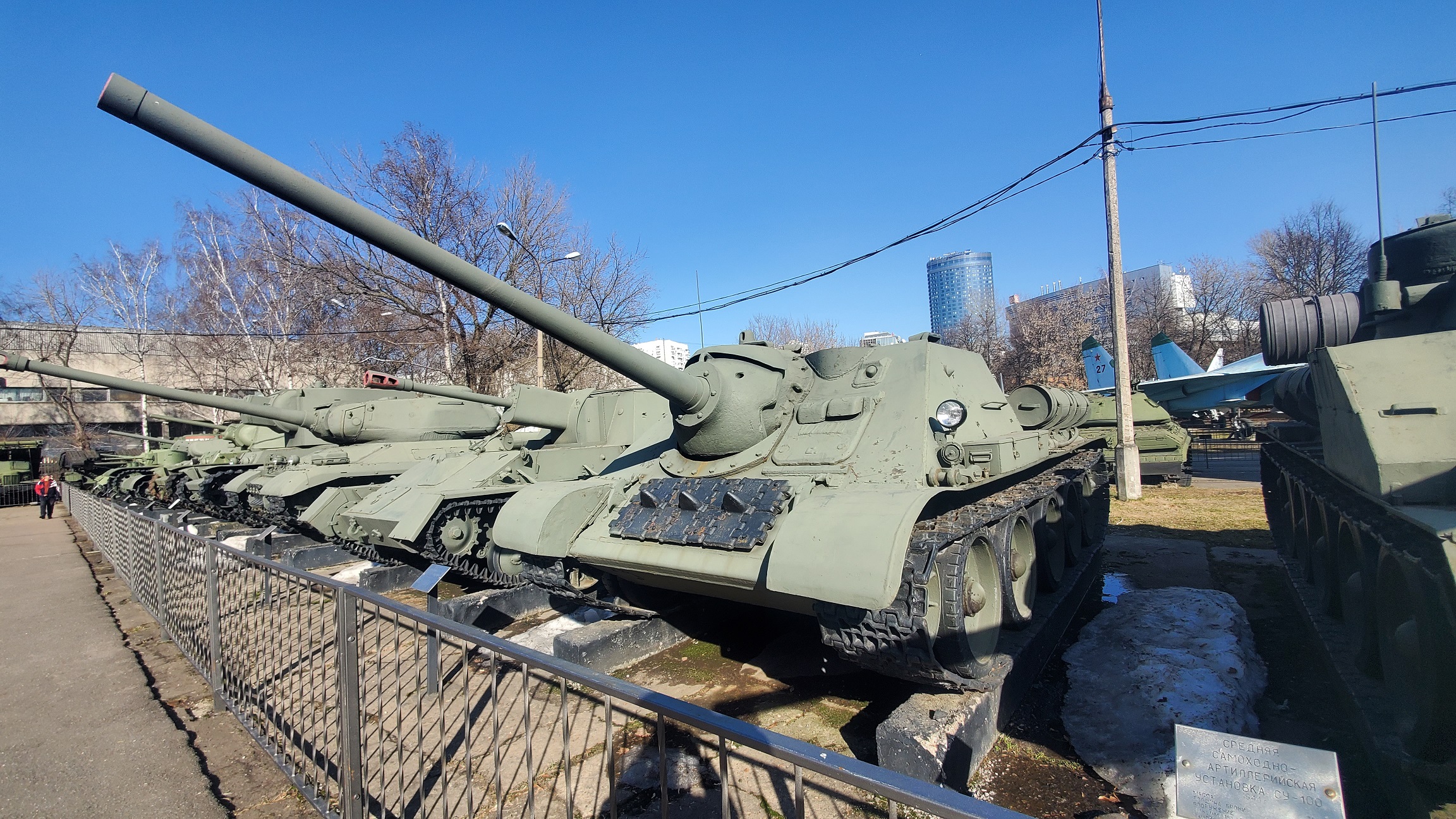Su-85 History and production
SU-85 is a medium-weight Soviet self-propelled gun belonging to the class of tank destroyers. SU-85s were actively and successfully used from September 1943 until the end of the Great Patriotic War.
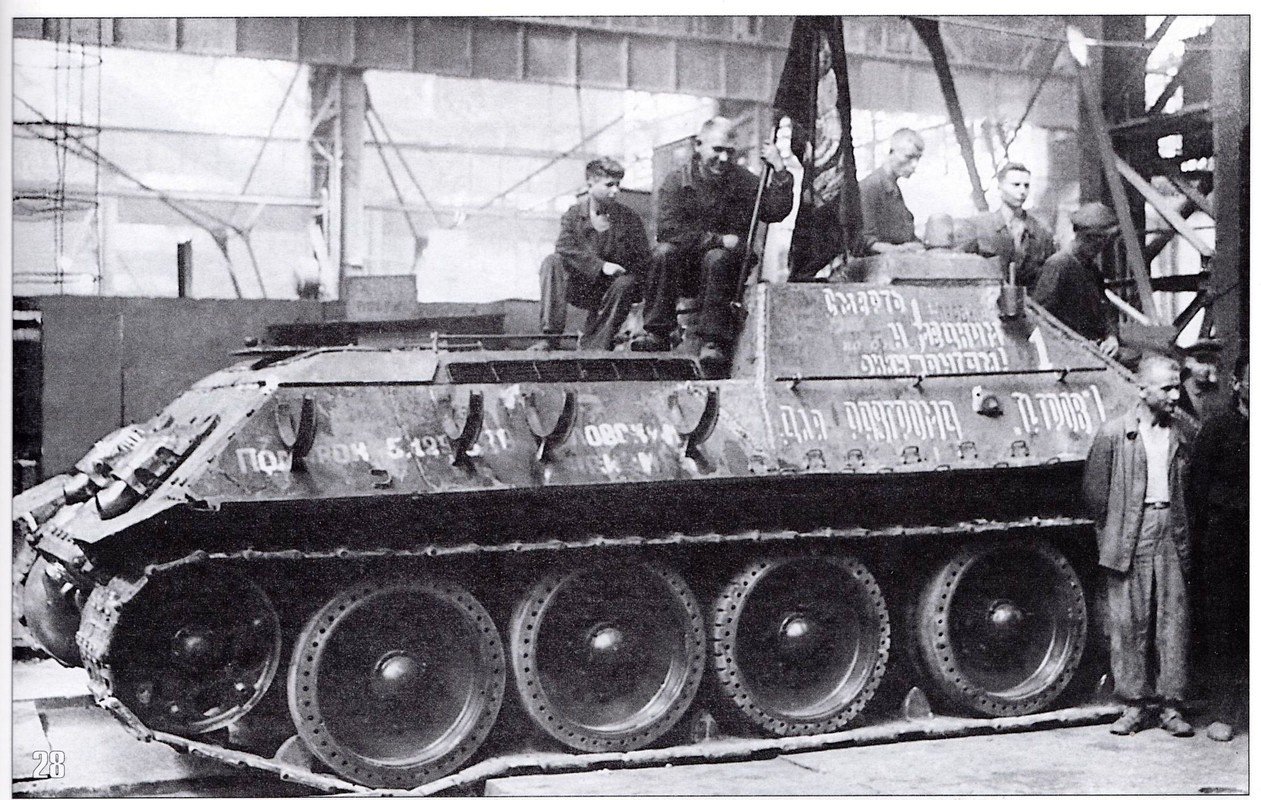 The SU-85 was created on the basis of the T-34 medium tank and the SU-122 assault gun and put into production in the summer of 1943. According to the reports of GBTU and UZTM, 2335 mass-produced vehicles were produced.
The SU-85 was created on the basis of the T-34 medium tank and the SU-122 assault gun and put into production in the summer of 1943. According to the reports of GBTU and UZTM, 2335 mass-produced vehicles were produced.
Machines of this brand were produced at the Ural Heavy Machine Building Plant (UZTM, also known as Uralmash) in Sverdlovsk from August 1943 to October 1944. In total, three experimental units were built in July 1943 (SU-85-I, SU-85-II and SU-85-IV) and 2335 serial self-propelled guns. The 85-mm D-5S cannon allowed the SU-85 to effectively fight enemy medium tanks at distances of more than a kilometer, and at shorter distances to penetrate the frontal armor of heavy tanks.
After the development of a more powerful self-propelled gun SU-100 due to a delay in the release of 100-mm armor-piercing shells and the cessation of the production of armored hulls for the SU-85, a transitional version of the SU-85M was produced from September 1944. In fact, it was a SU-100 with an 85 mm D-5S gun. The upgraded SU-85M differed from the original SU-85 version by more powerful frontal armor, increased ammunition capacity and the presence of a commander’s cupola with five viewing slots. Until December 1944, 315 of these machines were built.
Su-85 Armament
The main armament of the SU-85 was a rifled 85-mm D-5 gun, produced in two versions – D-5S-85 and D-5S-85A. These options differed in the method of manufacturing the barrel and the design of the shutter, as well as in the mass of their swinging parts – 1230 kg for the D-5S-85 and 1370 kg for the D-5S-85A.
Self-propelled units with D-5S85A systems were named SU-85A. In March, UZTM received 102 D-5S85s and 89 D-5S85As.
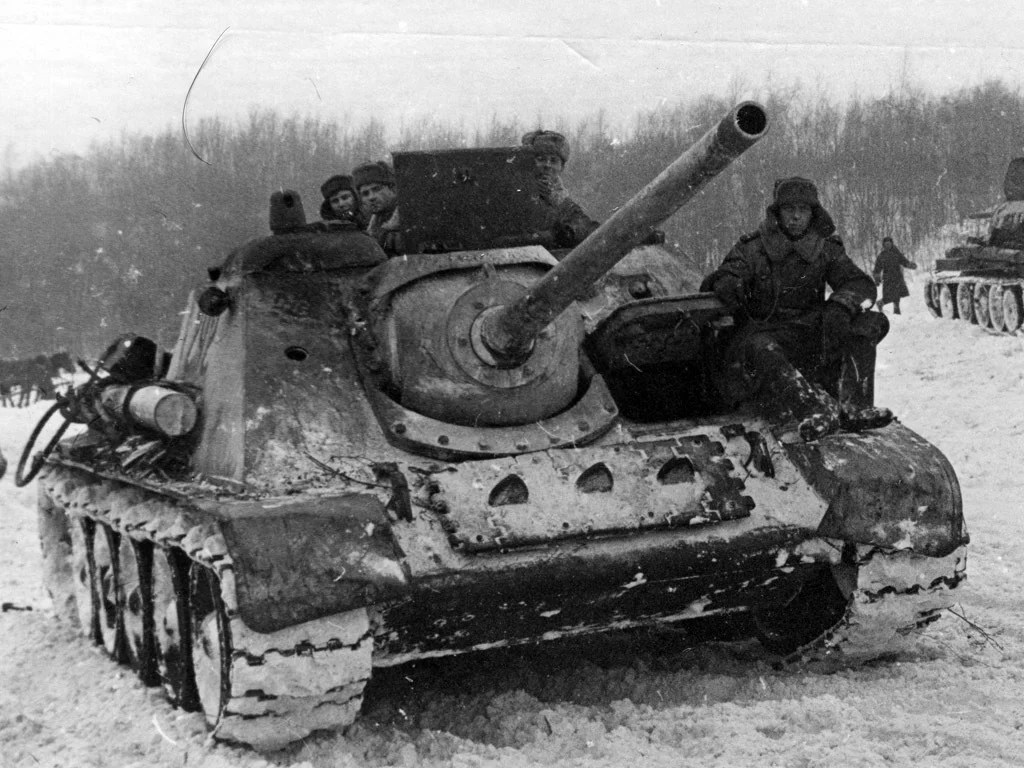 The situation with the release of two guns with the same purpose, but with different barrels, bolts and guards that are not suitable for each other to replace, can hardly be called normal. Not surprisingly, it was decided to stop the production of D-5S85 at plant No. 9. This was facilitated by the transition of the T-34-85 from the D-5T gun to the S-53 developed by the Central Artillery Design Bureau (TsAKB).
The situation with the release of two guns with the same purpose, but with different barrels, bolts and guards that are not suitable for each other to replace, can hardly be called normal. Not surprisingly, it was decided to stop the production of D-5S85 at plant No. 9. This was facilitated by the transition of the T-34-85 from the D-5T gun to the S-53 developed by the Central Artillery Design Bureau (TsAKB).
Only the frame, recoil brake, knurler, folding part of the fence, aiming and descent mechanisms were interchangeable. The gun was mounted in a frame installation, which, in essence, was the implementation of gimbal suspension. The gun was connected with horizontal trunnions to a rectangular frame, which, in turn, could rotate along a vertical axis, passing through the upper and lower parts of the fixed part of the armor casing of the gun mount, which was bolted to the frontal armor plate of the self-propelled guns. The D-5S gun had a barrel length of 48.8 calibers, the direct fire range reached 3.8 km, the maximum possible – 13.6 km. The range of elevation angles was from −5° to +25°, the horizontal firing sector was limited to ±10° from the longitudinal axis of the vehicle. The rotary mechanism of the gun is of a screw type, and the lifting mechanism is of a sectoral type, serviced by a guide. Descent guns mechanical manual.
The ammunition load of the gun was 48 rounds of unitary loading. Artillery shots were placed in racks along the port side and the engine bulkhead, as well as in the fender niche on the port side and a box under the gun. The rate of fire of the gun was 6-7 rounds per minute. The composition of the ammunition could include almost all 85-mm shells from the anti-aircraft gun mod. 1939, but in practice, in the vast majority of cases, only fragmentation and armor-piercing were used.
Ammunition
Shots and shells for the 85 mm D-5S tank gun.
- UBR-365P shot with a BR-365P projectile (sub-caliber armor-piercing projectile tracer of the “coil” type).
- Shot UBR-365 with a projectile BR-365 (blunt-headed with a ballistic tip with tracer localizers).
- Shot UBR-365K with a projectile BR-365K (sharp-headed with tracer localizers).
- Shot UO-365K with projectile O-365K (steel fragmentation grenade with a KTM fuse).
Compared to a wide range of ammunition for the 85-mm 52-K anti -aircraft gun, the ancestor of the D-5 gun, the SU-85 ammunition load was significantly less diverse. It consisted of:
- armor-piercing unitary shot weighing 16 kg with a blunt armor-piercing tracer with a ballistic tip 53-BR-365 weighing 9.2 kg (explosive weight – TNT – 164 g) and a charge 54-G-365 weighing 2.48-2.6 kg; initial speed 792 m/s;
- armor-piercing unitary shot weighing 16 kg with a sharp-headed armor-piercing tracer projectile 53-BR-365K weighing 9.2 kg (explosive mass – TNT or A-IX-2 – 48 g) and a G-365 charge weighing 2.48-2, 6 kg; initial speed 792 m/s;
- armor-piercing unitary shot weighing 11.42 kg with a coil-type sub-caliber projectile 53-BR-365P weighing 5.0 kg and a core 54-G-365 weighing 2.5-2.85 kg; initial speed 1050 m/s;
- a fragmentation unitary shot weighing 14.95 kg with a 53-O-365 projectile with a total mass of 9.54 kg (explosive mass – TNT or ammotol – 741 g) and a 54-G-365 charge weighing 2.6 kg; initial speed 785 m/s.
Fragmentation projectiles O-365 had a large number of options and, when equipped with some types of fuses, could be successfully used as high-explosive ones.
According to Soviet data, the BR-365 armor-piercing projectile normally pierced an armor plate 111 mm thick at a distance of 500 m, and 102 mm at twice the distance under the same conditions. The BR-365P sub-caliber projectile at a distance of 500 m normally pierced an armor plate 140 mm thick. At a meeting angle relative to the normal of 30°, when fired at close range, the BR-365 projectile pierced 98 mm, and at 600-1000 m – 88-83 mm of armor.
Organizational structure
In the Red Army, the SU-85 entered service with self-propelled artillery regiments. Regiments were the main tactical unit of self-propelled artillery. Self-propelled artillery regiments SU-85 were completed according to the state No. 010/453 adopted in 1943.
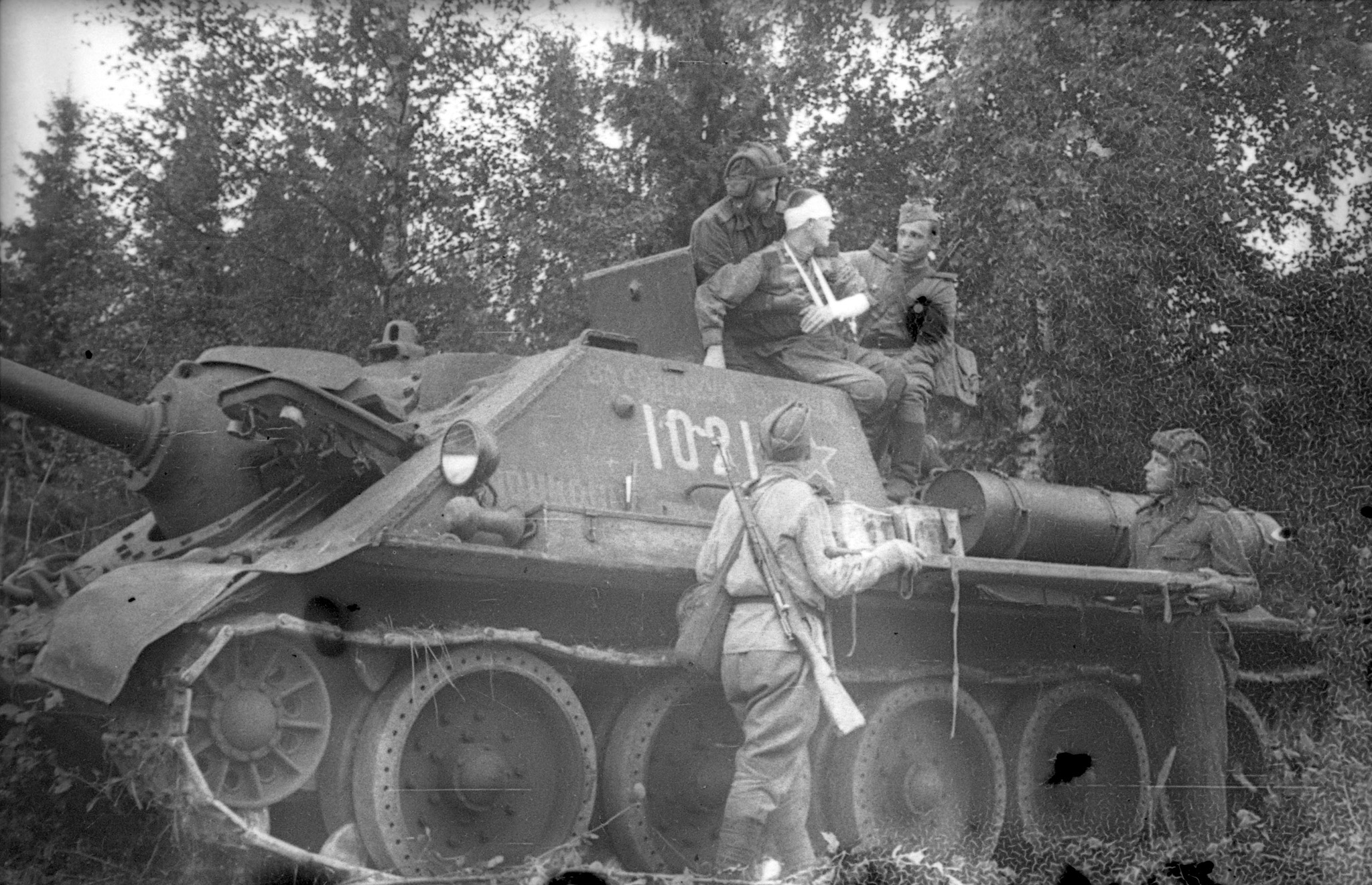 Its detailed structure was as follows :
Its detailed structure was as follows :
- SAP Commander:
- Batteries:
- 1st battery (4 SU-85);
- 2nd battery (4 SU-85);
- 3rd battery (4 SU-85);
- 4th battery (4 SU-85).
- Regiment HQ:
- Control platoon (1 T-34 and 1 BA-64 );
- Rear services:
- Regimental medical center;
- Batteries:
Combat use
The SU-85s received a baptism of fire in the fall of 1943 in the battles for the Left-Bank Ukraine and proved to be a highly effective anti-tank weapon. Later they were used until the very end of the war. After the adoption of the medium tank T-34-85 , armed with the same gun, self-propelled guns were discontinued and gradually replaced by more powerful SU-100.
The most productive ace tanker who fought on the SU-85 was Guards Lieutenant M.P. Kuchenkov from the 356th Guards Self-Propelled Artillery Regiment of the 10th Guards Tank Division. During the war years, he knocked out 32 enemy armored vehicles.
In popular culture
SU-85 in art
In V. A. Kurochkin’s story “ In War as in War, ” the main character, junior lieutenant of the Soviet Army, Maleshkin, is the commander of the SU-85. In 1968, a film of the same name was shot based on the story, however, due to the fact that at that time almost all the surviving SU-85s had already been cut into metal, the modernized SU-100 with additional boxes for equipment on the sides was used in the film.
SU-85 in the souvenir and gaming industry
The SU-85 has a limited presence in bench modeling. Plastic model-copy of SU-85 in 1:35 scale is produced by Tamiya (Japan), and SU-85M by Dragon (China). In the magazine “Russian tanks”. Issue No. 8. SU-85. New Zealand company Battlefront Miniatures releases SU-85 in 1:100 scale for their wargame Flames Of War
In 2019, the Zvezda company (Russia) released a new prefabricated plastic model SU-85 (art. No. 3690), the prototype of which is the car located in the Central Museum of the Armed Forces.
SU-85 in computer games
The SU-85 can be seen in a number of computer games:
- in the MMO game ” World of Tanks ” ;
- in the domestic game ” Sudden Strike 3: Arms for Victory “;
- in the tank simulator “T-34 against the Tiger”;
- in the tank simulator ” Panzer Front “;
- in the military strategy ” Order of War ” ;
- in the game Close Combat III: The Russian Front (English)
- and its remake Close Combat: Cross of Iron (English)
- in the turn-based strategy Combat Mission II: Barbarossa to Berlin (English)
- in military strategy RUSE
- in military strategy ” Behind Enemy Lines 2 “
- in the military strategy ” Call to Arms “
- in the military strategy Company of Heroes 2
- in military real-time strategy ” Hearts of Iron IV “
- in the MMO game “Ground War: Tanks”
- in online game Heroes & Generals
- in the MMO game ” War Thunder “
- in the MMO game “Wild Tanks online”
The reflection of the tactical and technical characteristics of armored vehicles and the features of their use in combat in many computer games is often far from reality.


